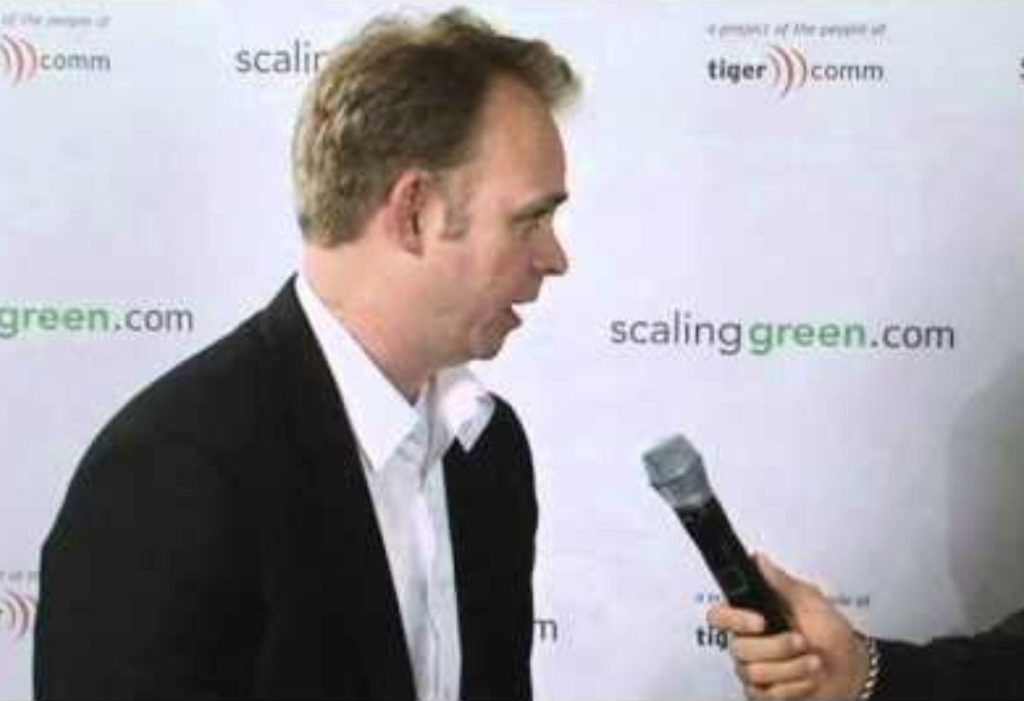A few weeks ago, my Tigercomm colleague Mark Sokolove and I were able to take Scaling Green’s Communicating Energy lecture series on the road to the Solar Power International 2011 (SPI) conference and trade show in Dallas, Texas. While there, we spoke with several leaders in the solar and cleantech industries. You can read about and view the interviews on The Solar Foundation’s (TSF) National Solar Jobs Census 2011 – a census showing record jobs growth in the industry – on Scaling Green. Today, we turn our focus to the wildly inflated Solyndra story.
Fossil-allied pundits are shrieking that this failure came and went with over $500M in public money. But those same critics can never manage to bring themselves to talk about the 100 times greater amounts of taxpayer money that are going to highly profitable, mature industries. Americans don’t want their money being spent that way, and they do want continued support for clean energy technology policy support.
But fossil critics are going a step further. They are trying to turn the failure of one company into a statement about the market viability of an entire industry.
As you can see from the comments in this video, solar industry executives and analysts are in full agreement that the Solyndra story has been wildly overhyped, and also distorted, by the media. That’s the product of skillful maneuvering by clean energy industries’ fossil fuel competitors, and their allies in Congress.
As Tor Valenza (a.k.a. “Solar Fred”) points out, “There have been solar companies that have failed in the past, and there will be solar companies that fail in the future…and that’s going to happen in every industry.”
Why? Because this is a totally normal feature of capitalism. The reality is that “creative destruction” happens all the time, is totally natural, and is certainly not an indication of a “failure” of any kind. In addition, as Valenza points out, it’s absurd to paint an entire industry with “we’re all Solyndra and that we’re a failure,” as this “does not speak to #1 the jobs that we’ve grown and #2 to the new growth figures that we’ve had over the past year.”
Rex Gillespie of solar water heating systems manufacturer Caleffi North America reinforces this point. He explains that Solyndra was one specific company with one specific technology that didn’t happen to work out. But that, of course, doesn’t mean the rest of the industry, with different technologies and different business models, isn’t doing just fine. In fact, the rest of the industry is doing very well!
For his part, Schneider Electric Renewable Energies Commercial VP-Americas Rudy Wodrich echoed the point that “these things will happen…in any industry in its infancy, when it’s growing through growth and cyclical changes…that’s natural.”
Janet Hughes, Executive VP of Ontility, notes that the solar industry is offering tremendous opportunities to help America “get back on its feet economically, and “we should be supported at every step of the way to do that.”
Finally, Kevin Smith, CEO of large-scale solar power developer SolarReserve, confidently predicts that “it’s going to be a solar world.” Smith knows what he’s talking about, with over 20 years in the power industry developing plants of every type. Given this future, Smith strongly asserts that we “need to stay in the game” if we want to compete with “the Chinese…the French…the Germans…the Spanish.” The other alternative, in Smith’s view, would be to throw up our hands and say, “this is all too complicated and let’s just drill.” That’s clearly not acceptable, as we will simply end up ceding a crucial, rapidly growing market to those other countries.
Getting back to Solyndra specifically, it’s important to emphasize that – as Wikipedia explains – this company’s technology was unusual, “unlike any other product ever tried in the industry…made of racks of cylindrical tubes (also called tubular solar panels), as opposed to traditional flat panels.”
The problem with Solyndra’s business model, in large part, was that it was designed to be competitive with relatively high-cost silicon-based solar modules. When silicon prices sharply plummeted (from as high as $450 per kilogram in 2008 to just $53 per kilogram in June 2011), in part due to government policy decisions in Asian countries like China, Solyndra’s business model no longer worked. Again, though, this is not at all negatively reflective of the entire solar industry. To the contrary, it’s a result of the plummeting cost of conventional, silicon-based solar modules, which in turn is indicative of an increasingly cost-competitive solar industry as a whole. Given that the mainstream approach has worked so well, the alternative approach Solyndra was pursuing is simply no longer needed. It’s really not much more complicated than that.
Sadly, what we have here is a case of a skewed media narrative, one that frequently values Despite some pundits’ efforts to talk clean energy companies into the tank, so far, solar power is actually doing far better than expected. It’s growing faster, adding more installations and creating more jobs than anyone had expected in their most optimistic forecasts a few years ago.
Now, if the media would only report a lot more on the day-in-day-out success of the solar industry, and a lot less on one specific company’s unusual, albeit dramatic, collapse, we’d all be a lot better informed. Because, as the solar jobs study found, solar has now surpassed steel manufacturing in America, and is rapidly gaining on fossil fuels. And that is a far bigger story than Solyndra, no matter how you look at it.

